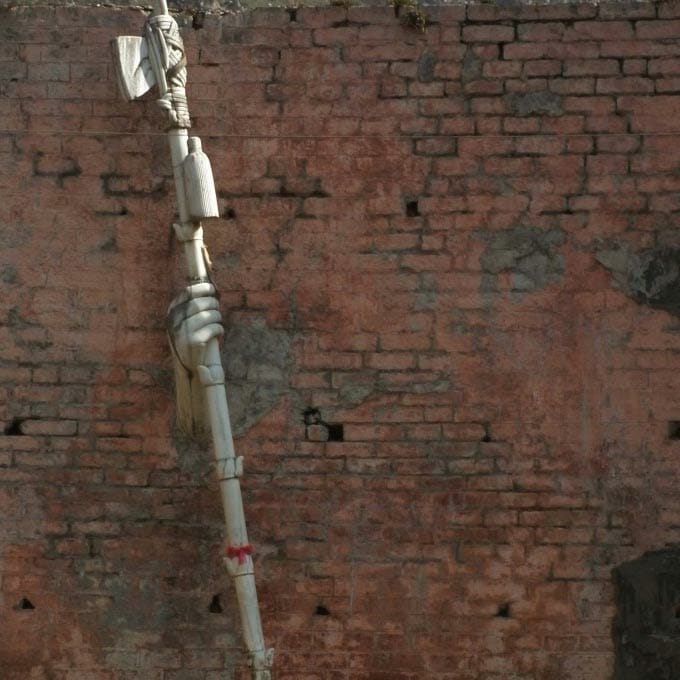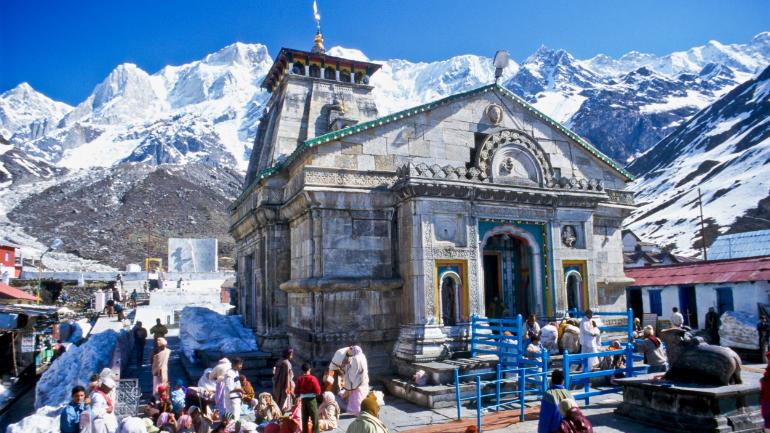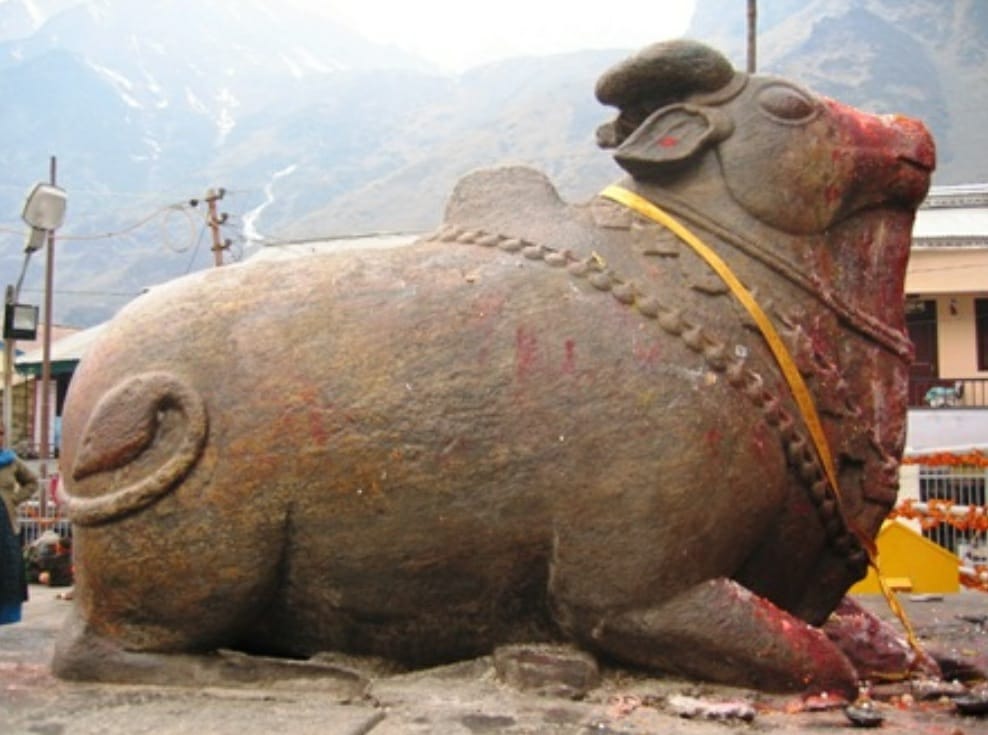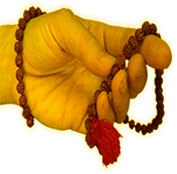Kedarnath is a tremendous space.
The utterance of the sound "Shiva" attains a
completely new dimension and significance in Kedar.
It is a space which has been specially prepared for this
particular sound. When we utter the word "Shiva," it is the freedom
of the uncreated, the liberation of one who is not created. It is not
right to say this, but it is almost like on this planet, the sound "Shiva" emanates from this place.
For thousands of years, people have experienced that space as a reverberation of that sound.
When we say "Shiva," it is not about
creating one more idol or god that we can ask
for more prosperity or better things in life.
The word "Shiva" means "that which is not." Today,
modern science is proving to us that everything comes
from nothing and goes back to nothing.

The basis of existence
and the fundamental quality of the cosmos is vast nothingness.
The galaxies are just a small happening – a sprinkling. The rest is all vast empty space, which is referred to as Shiva.
The Badrinath temple was
installed by Adi Shankara.
He set up his own people there.
Even today, the descendants of the families that he set up traditionally,
the Nambudiris, are the priests in the temple. Visually,
this area is an incredible place. The town is not very well kept,
but if you look around at the rest of it, it is incredibly beautiful.
From Govind Ghat to Badri, that 25-kilometer drive is probably the most
incredible drive you can have anywhere in the world.
I have traveled to many places but this 25-kilometer drive is so incredible, there are no words to describe how the mountains are.
From Kaladi to Badrinath, the distance is more than
three thousand kilometres by walk. Adi Shankara walked
such distances not just south to north but also east to west.
He walked up and down the country thrice and east to west once.
Once, when he was up in the north, he came to know intuitively
that his mother was dying. At the age of twelve, his mother had
given him permission to take sanyas only after he had promised her
that he would be there with her at the moment of her death. So when
he realized that his mother was ill, he walked all the way back to
Kerala just to be with her beside her deathbed. He spent a few days with his mother
and after she had died, he walked back north again. When you travel to the Himalayas,
you will wonder how anyone could have walked through this.
Imagine the effort involved. Motorized travel destroyed pilgrimage! If you had walked,
it would settle your life for good.
The purpose of coming to the Himalayas
is not to achieve something.
This was an opportunity to simply be dwarfed –
if not dissolved, at least to be dwarfed.
You can’t believe that thousands of years of ago,
people went into these mountains when there were no roads,
automobiles or maps of where the mountain begins and where it ends.
Just going. If you want to progress on the path of yoga,
this is needed. Not knowing where the end is, simply keep going.
“It doesn’t matter where it begins or where it ends, till I reach there,
I simply keep going.” Unless a person has this attitude and strength within himself, the spiritual path is out of question.
Kedarnath is a
very heady mixture of energies. This is a place that has witnessed
thousands of yogis and mystics of every kind. When I say every kind,
you cannot imagine those kinds. These are people who made no attempt
to teach anything to anyone. Their way of making an offering to the world
was by leaving their energies, their path, their work – everything – in a certain way in these spaces.
When you think of someone
on the spiritual path, you would probably
think of them within a certain kind of framework in terms of a certain kind of behavior,
dress or speech. But this is not a land of just that kind of spiritual person. The kind
that fits into your ways of understanding has been here. But there have been many more
who are utterly wild, whom you can never recognize as spiritual. But these are people
who have touched the very peaks of existence.

When we say “a yogi,” we do not mean someone of a certain behavior or morality. A yogi is perfectly in tune with life. So tuned in that he can dismantle life and put it back together again. The fundamental life that is you, if you can dismantle that completely and put it back, only then you are a yogi. There have been many such incredible human beings For a person who is seeking some kind of spiritual uplift, Kedar is a boon whose proportions you cannot imagine. That’s how it is, if one is open to this. It is very difficult to explain what it means. After all, it’s just a mountain, an outcrop of rock. But what makes an enormous difference is what has done to the space by the type of people who lived here for thousands of years. This is the place where so many yogis shed their bodies. It is something you must experience. After being born in India, before you are too old and no good for anything, you must make it once to the Himalayas.
There is a legend that after the Kurukshetra war, the Pandavas were very affected because they had killed their own kinsmen – their own brothers and relatives. This was called Gothravadha. They felt guilty and soiled by this act and were looking for a way to absolve themselves of it. So they went looking for Shiva. Shiva did not want to give them the pleasure of suddenly becoming free from this horrible act, so he converted himself into the form of a bull and tried to escape. But they espied him and followed him to try and catch him. Shiva went into the ground and when he came up, different parts of the body came up in different places. The forehead is Pashupathinath in Nepal, considered as the most significant.

The hump of the bull is Kedarnath, the two forelegs are Tunganath, which is on the way to Kedar. The navel appeared in a place in the Indian part of the Himalaya called Madhya-Maheshwar which is a very powerful Manipuraka linga, and the matted locks of Shiva appeared in what is called Kalpnath. Like this, different parts of the body appeared in different places.
This description of body parts has something to do with the seven chakras. These temples were established as a human body. It was a great experiment – trying to create a huge body with a tantric possibility. One such body happened in the direction of the Indian Himalayas. Another such body flowed towards the western direction where they tried to convert Nepal itself into a body.
The legend goes that Shiva and Parvati lived on the banks of Kantisarovar, and in Kedar, there lived many yogis whom they would visit. Kantisarovar is the lake that burst out and came to Kedar during the 2013 floods. Today, it is being called Gandhi Sarovar. It is actually Kantisarovar. Kanti means grace, sarovar means a lake. It is a lake of grace. In the yogic culture, Shiva is not seen as a God. He was a being who walked this land and is the very source of the yogic traditions. He is the Adiyogi or the first yogi, and also the Adi Guru, the first Guru. This first transmission of yogic sciences happened on the banks of Kantisarovar, where Adiyogi b gan a systematic exposition of this inner technology to his first seven disciples, celebrated today as the Sapta Rishis.
